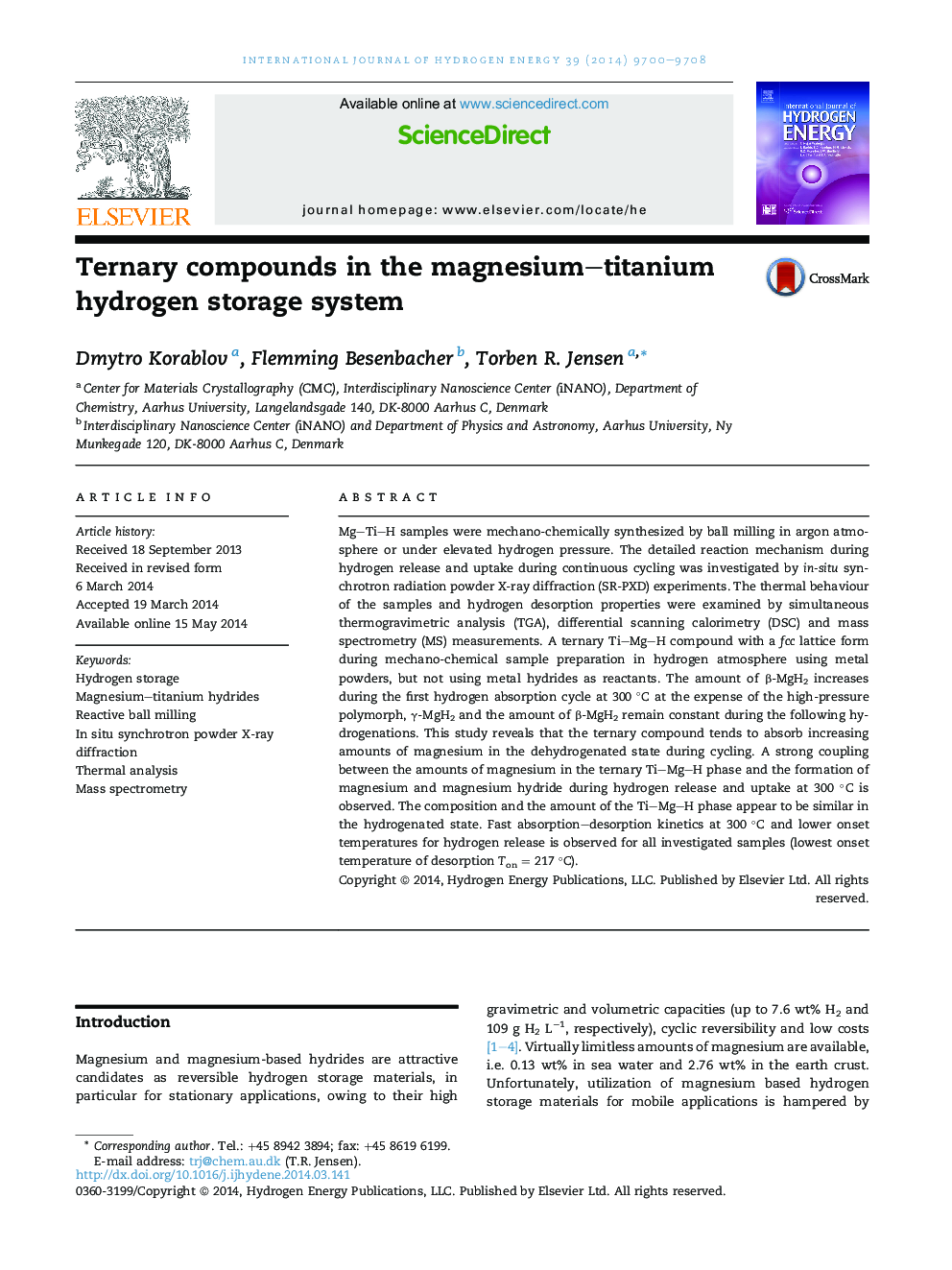| Article ID | Journal | Published Year | Pages | File Type |
|---|---|---|---|---|
| 7718960 | International Journal of Hydrogen Energy | 2014 | 9 Pages |
Abstract
Mg-Ti-H samples were mechano-chemically synthesized by ball milling in argon atmosphere or under elevated hydrogen pressure. The detailed reaction mechanism during hydrogen release and uptake during continuous cycling was investigated by in-situ synchrotron radiation powder X-ray diffraction (SR-PXD) experiments. The thermal behaviour of the samples and hydrogen desorption properties were examined by simultaneous thermogravimetric analysis (TGA), differential scanning calorimetry (DSC) and mass spectrometry (MS) measurements. A ternary Ti-Mg-H compound with a fcc lattice form during mechano-chemical sample preparation in hydrogen atmosphere using metal powders, but not using metal hydrides as reactants. The amount of β-MgH2 increases during the first hydrogen absorption cycle at 300 °C at the expense of the high-pressure polymorph, γ-MgH2 and the amount of β-MgH2 remain constant during the following hydrogenations. This study reveals that the ternary compound tends to absorb increasing amounts of magnesium in the dehydrogenated state during cycling. A strong coupling between the amounts of magnesium in the ternary Ti-Mg-H phase and the formation of magnesium and magnesium hydride during hydrogen release and uptake at 300 °C is observed. The composition and the amount of the Ti-Mg-H phase appear to be similar in the hydrogenated state. Fast absorption-desorption kinetics at 300 °C and lower onset temperatures for hydrogen release is observed for all investigated samples (lowest onset temperature of desorption Ton = 217 °C).
Related Topics
Physical Sciences and Engineering
Chemistry
Electrochemistry
Authors
Dmytro Korablov, Flemming Besenbacher, Torben R. Jensen,
